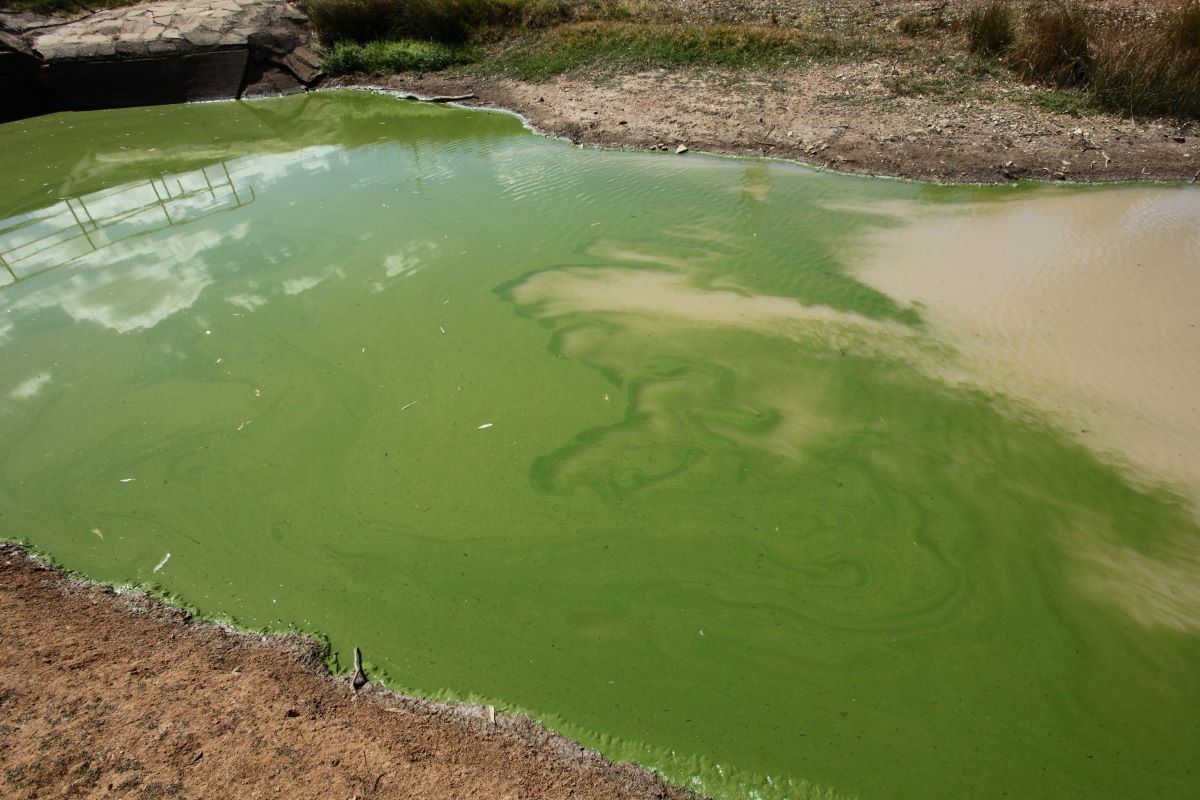What is Blue-green Algae?
Blue-green Algae, also known as Cyanobacteria are a type of microscopic, algae-like bacteria which inhabit freshwater, coastal and marine waters. The term bloom is used to describe an accumulation of algal cells to a point where they discolour the water, form scum, produce unpleasant taste and odours, affect fish populations and reduce water quality.
Blue-green Algae can reproduce quickly and form visible blooms. Blooms generally occur during summer and autumn when conditions are favourable, including:
- Warm temperatures
- Still or slow flowing water
- Increased levels of nutrients, especially nitrogen and phosphorus
Nutrients are naturally present in sediment or are washed into the water systems from external sources. External sources of nitrogen and phosphorus are:
- Agricultural and household fertilisers
- Household products that get washed down with stormwater
- Sewerage effluent
- Stormwater runoff from roads, and other hard surfaces.

Effects of Blue-green Algae
When Blue-green Algae occur in high number, toxins are produced causing health problems for people, domestic animals and stock that come into contact with the algae.
Blue-green Algae blooms can cause:
- Harmful human health effects
- Death of livestock
- Domestic animals and wildlife
- Bad odours
- Fish kills
- Closure of water storages for drinking and recreational use
- High we water treatment costs
Managing Blue-green Algae
The most effective method of preventing Blue-green Algae is to minimise the nutrient load entering the waterways through:
- Appropriate treatment and disposal of stormwater, agricultural, industrial and sewage effluent
- Planting or maintaining riparian vegetation
- Soil conservation and flow manipulation to prevent the build-up of blue-green algae
For current Blue-green Algae and Bacteria reading of Lake Albert see Lake Albert Water Quality – Current Readings
